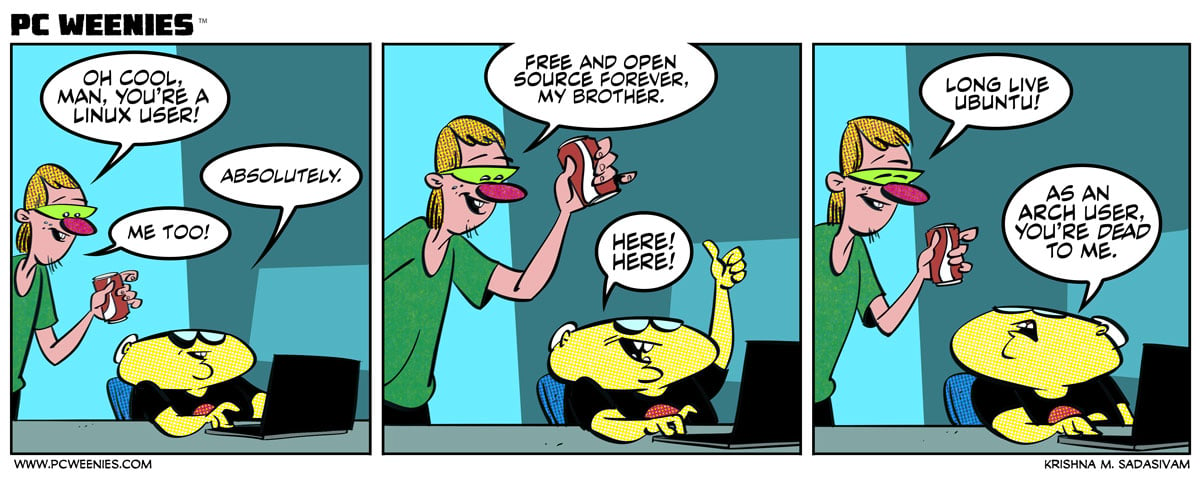this post was submitted on 12 Jan 2025
635 points (94.4% liked)
linuxmemes
21818 readers
4 users here now
Hint: :q!
Sister communities:
Community rules (click to expand)
1. Follow the site-wide rules
- Instance-wide TOS: https://legal.lemmy.world/tos/
- Lemmy code of conduct: https://join-lemmy.org/docs/code_of_conduct.html
2. Be civil
- Understand the difference between a joke and an insult.
- Do not harrass or attack members of the community for any reason.
- Leave remarks of "peasantry" to the PCMR community. If you dislike an OS/service/application, attack the thing you dislike, not the individuals who use it. Some people may not have a choice.
- Bigotry will not be tolerated.
- These rules are somewhat loosened when the subject is a public figure. Still, do not attack their person or incite harrassment.
3. Post Linux-related content
- Including Unix and BSD.
- Non-Linux content is acceptable as long as it makes a reference to Linux. For example, the poorly made mockery of
sudoin Windows. - No porn. Even if you watch it on a Linux machine.
4. No recent reposts
- Everybody uses Arch btw, can't quit Vim, <loves/tolerates/hates> systemd, and wants to interject for a moment. You can stop now.
Please report posts and comments that break these rules!
Important: never execute code or follow advice that you don't understand or can't verify, especially here. The word of the day is credibility. This is a meme community -- even the most helpful comments might just be shitposts that can damage your system. Be aware, be smart, don't fork-bomb your computer.
founded 2 years ago
MODERATORS
you are viewing a single comment's thread
view the rest of the comments
view the rest of the comments

To expand on the hate of snaps:
They're a packaging solution for apps and dependencies. They're apparently quite comfortable for app developers to use too. There was a hiccup where some apps really struggled to run well as snaps, but AFAIK that was fixed.
The common issues are snapcraft being the only repository and the methods of pushing them:
Snapcraft is where the packages are stored and loaded from, and it's a closed-source repo hosted and controlled by Canonical, with no option to configure snap to use a different source. That has advantages for security, if you trust Canonical to vet and take responsibility for the packages on their system, but some people chafe at that lack of control. Compare to flatpak, where you can add arbitrary repos, so any distro vendor can have their own set of packages and versions they've vetted for stability and compatibility, but if I want a different version than my vendor maintains in their remote, I can use a different remote for certain apps instead.
The second issue is that the classical apt system, which used to install
.debpackages, was utilised to install snaps instead, so you'd runapt install packageand expect a .deb to be installed, but instead it just downloads a script that runssnap install packageand you get a snap instead, which is particularly annoying when you previously had it as a deb and it suddenly gets replaced. The argument here is a smooth transition to the "better" system, on the premise that snaps are better and the assumption that users won't care or notice. In some cases (the hiccups mentioned earlier) that just wasn't the case and people got frustrated, but even if it worked, some people (including me) take issue with expecting a deb and getting a snap - if I want a snap, I'll use snap, and if your deb is deprecated, offer me to switch instead of silently installing the alternate source instead.Thank you for explaining that. I'm new to Linux and really didn't understand that snap thing I heard about